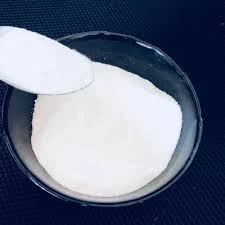
Nov . 06, 2024 15:43 Back to list
Hydroxyethyl Cellulose Powder Applications and Benefits for Various Industries
Hydroxyethyl Cellulose Powder A Versatile Polymer for Various Applications
Hydroxyethyl cellulose (HEC) powder is a non-ionic, water-soluble polymer derived from cellulose, the most abundant natural polymer on earth. Renowned for its exceptional thickening, stabilizing, and binding properties, HEC has garnered immense popularity across various industries, including pharmaceuticals, cosmetics, food, and construction.
Chemical Structure and Properties
Hydroxyethyl cellulose is produced by the etherification of cellulose with ethylene oxide. This process introduces hydroxyethyl groups into the cellulose chain, enhancing its solubility in water while maintaining biodegradability and biocompatibility. HEC is characterized by its ability to form a clear, viscous solution in water, making it an excellent thickener for a variety of applications.
The degree of substitution (DS) – the average number of hydroxyethyl groups per glucose unit in the cellulose chain – significantly influences the viscosity and functional properties of HEC. By controlling the DS, manufacturers can tailor HEC to meet specific requirements, whether it be for a low-viscosity solution suitable for fast-drying applications or a high-viscosity gel for enhanced stability.
Applications in Pharmaceuticals
In the pharmaceutical industry, hydroxyethyl cellulose powder serves multiple roles. Its ability to act as a thickening agent is vital for formulating gels, creams, and ointments that require a stable, homogenous consistency. Additionally, HEC is employed as a binding agent in tablets, ensuring uniform distribution of active ingredients. Its film-forming capabilities also contribute to controlled drug release, improving therapeutic efficacy.
HEC is favored in producing ophthalmic solutions due to its biocompatibility and ability to enhance the viscosity of eye drops, providing prolonged retention time on the ocular surface. This property is essential for patients requiring frequent ocular treatments, as it reduces the need for repeated applications.
Role in Cosmetics and Personal Care
hydroxyethyl cellulose powder

Hydroxyethyl cellulose is widely incorporated into cosmetic formulations. Its thickening properties help achieve the desirable texture in lotions, shampoos, and conditioners. By enhancing the product's viscosity, HEC provides a luxurious feel, making the application process more pleasurable.
Moreover, HEC acts as a stabilizer in emulsions, preventing the separation of oil and water phases in creams and lotions. Its film-forming ability is also utilized in hair styling products, offering hold without stiffness. Additionally, HEC is used in facial masks and scrubs for its gentle exfoliating properties.
Impact on Food Industry
In the food sector, hydroxyethyl cellulose serves as a food stabilizer, thickener, and emulsifier. Its ability to improve the texture and consistency of food products makes it a popular additive in sauces, dressings, and bakery items. HEC also finds application in gluten-free products, helping to improve their mouthfeel and structure.
As a low-calorie thickening agent, HEC is favorable for health-conscious consumers aiming to reduce calorie intake while maintaining product quality. Its versatility allows it to be utilized in various food industries, spanning from dairy to meat products.
Construction and Other Industries
Hydroxyethyl cellulose is significant in construction, particularly in cement-based formulations and tile adhesives. It enhances water retention and workability, allowing for improved adhesion and extended open time of the materials. This characteristic is crucial in ensuring the durability and longevity of construction products.
Conclusion
Hydroxyethyl cellulose powder stands out as a multifunctional polymer that plays a pivotal role across several industries. Its remarkable properties – including thickening, stabilizing, and binding – make it an indispensable ingredient in pharmaceuticals, cosmetics, food products, and construction materials. As research continues to unlock its potential, HEC will undoubtedly remain a vital component in developing innovative products that meet the demands of consumers in today’s dynamic market.
-
What is HPMC?
NewsJun.06,2025
-
Understanding Redispersible Powder: The Future of Construction Materials
NewsJun.06,2025
-
Understanding RDP Powder: The Ultimate Solution for Your Construction Needs
NewsJun.06,2025
-
Pure HPMC: The Ideal Solution for Modern Construction and Building Materials
NewsJun.06,2025
-
Methyl Hydroxyethyl Cellulose: A Versatile Chemical Compound
NewsJun.06,2025
-
Hydroxyethyl Cellulose Power: The Essential Chemical for Various Industries
NewsJun.06,2025







